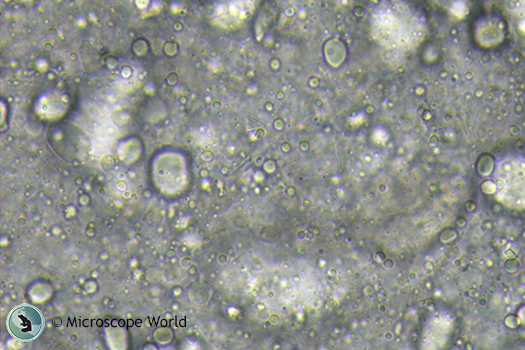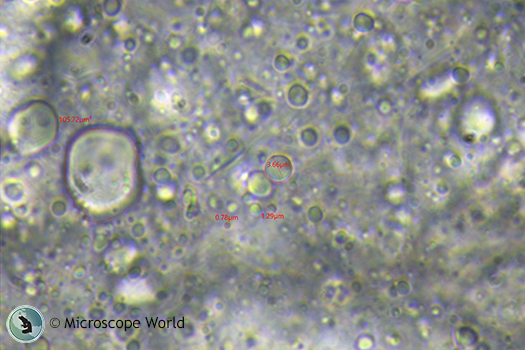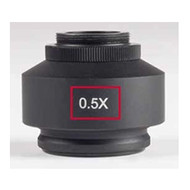Using a C-Mount Adapter to Increase Digital Measuring Capability
Jul 1st 2019
Simplify Small Particle Measurement Using A C-Mount Adapter
It is possible to use a microscope c-mount adapter with no formatting lens in order to increase digital measuring capabilities. As you may have read in some of our other posts, a microscope camera connects to the microscope via a c-mount adapter. The c-mount adapter is specific to the microscope - this means you can not mix and match c-mount adapters. For example, you can not put a Zeiss c-mount adapter on a Swift Optical microscope. Each microscope has its own c-mount that was made specifically to work with that microscope.
The c-mount adapter typically has a formatting lens installed in it, which adjusts the image coming up the trinocular tube to match the size of the camera sensor. The goal is to match the field of view of the image seen on your camera with what you see through the microscope eyepieces. The field of view will not be exactly the same since the microscope provides a circular image and a camera sensor is rectangular, but it can be matched closely.
But what if field of view is not of paramount importance? What might be the benefit of using an unformatted c-mount adapter, such as a 1x c-mount with no formatting lens? Since a 0.5x c-mount effectively de-magnifies the image by 50%, using a 1x c-mount will essentially double the on-screen magnification of your sample. This could make it easier to measure particularly small particles within a sample, which might otherwise be beyond the capabilities of a digital camera.
On that note, we were recently asked by a customer what we could provide that would allow measurement of dispersed phase globules within an emulsion that ranged from 0.8µm to 5.0µm in size. We placed a small drop of a lotion emulsion on a microscope slide and placed it under the Fein Optic RB30 microscope and viewed it with the 100x objective lens. We attached a basic 5 megapixel documentation camera, the DCM5, using a 0.5x c-mount adapter since the camera has a 1/2" sensor. This is the image we captured.

With digital measurement, a general rule is the smaller the particle, the more trouble you will have with edge detection. Getting reliable measurements under 1µm is problematic, since you are relying so much on the digital magnification and resolution provided by your output monitor. We wrote about the problems digital magnification creates here.
Next, we mounted the same microscope camera using a 1x c-mount adapter (no formatting lens) and captured this image:

Using the 1x c-mount, we have avoided the image reduction that happens when using the 0.5x c-mount adapter, thereby doubling the size of the image being captured by the camera sensor. As a result, we don't need to digitally zoom using the camera software in order to measure the very small particles. We used the measurement software that is included with the DCM5 camera to measure various particles within the sample and were able to get reliable measurements at about 1µm.
The upshot is, if you need to digitally measure particles at or just under 1µm, and don't have the budget for an electron microscope, the answer may simply be to choose a c-mount attachment without a formatting lens to pair with your 1/2" camera sensor.
Sometimes the simplest solution is the best.
If you have any questions about c-mount adapters and how to pair the correct one with your microscope, contact Microscope World.





